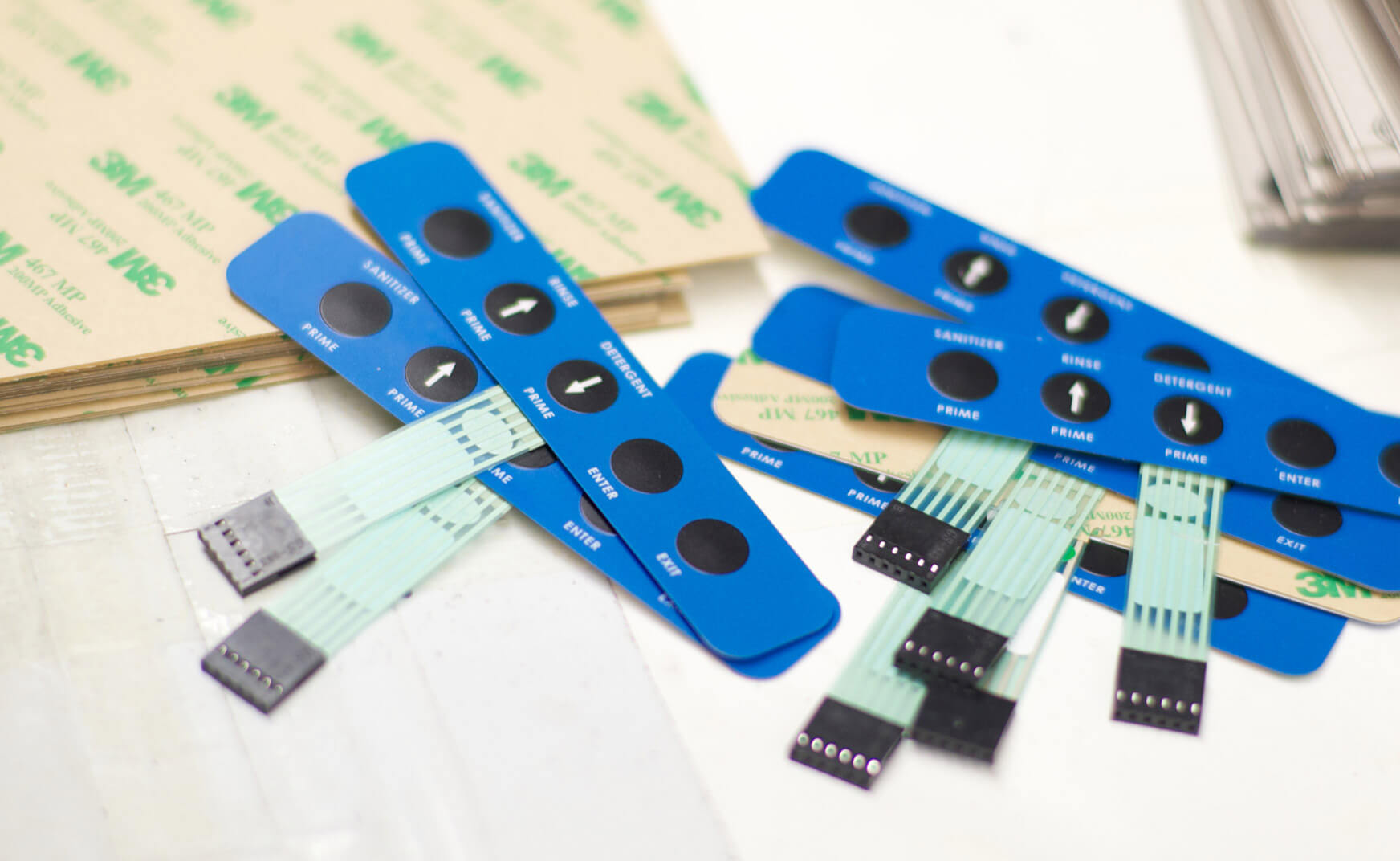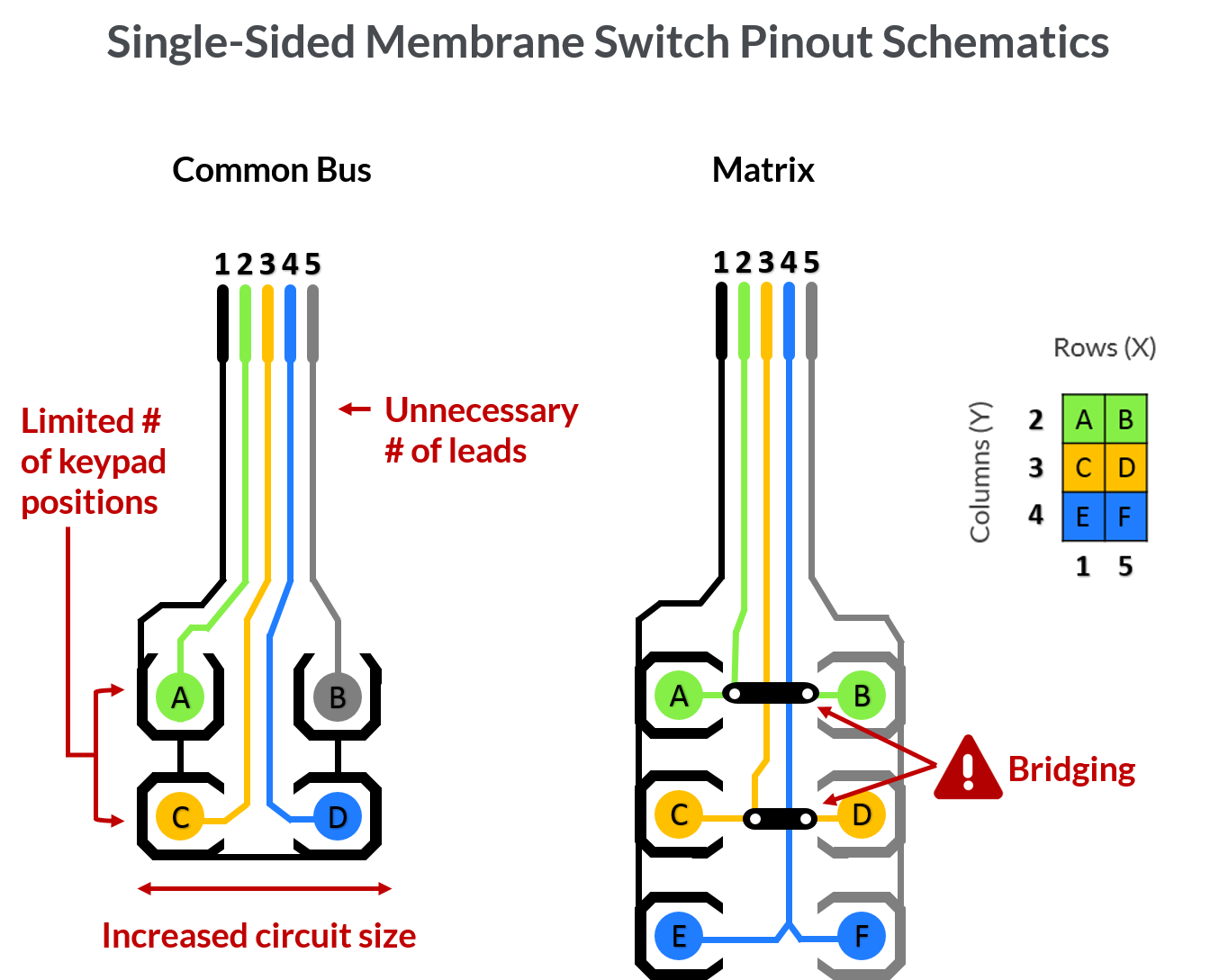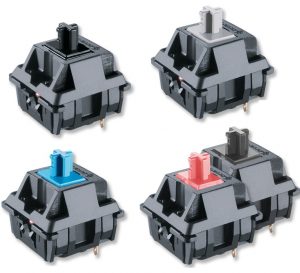The Duty of Membrane Switches in Enhancing Device Usability and Appearance
Membrane switches over represent a significant improvement in interface technology, perfectly incorporating functionality with visual charm. Their design is not only practical, using receptive controls in a compact form, but likewise personalized, permitting one-of-a-kind branding and aesthetic engagement. As sectors significantly focus on customer experience, the ramifications of these attributes expand past simple ease, affecting product style and customer complete satisfaction. What continues to be to be explored is exactly how these elements will certainly advance in action to arising trends and technical developments, shaping the future of human-device communication.
Comprehending Membrane Layer Switch Modern Technology

The graphic overlay functions as the noticeable surface area, frequently published with signs and tags that lead user communication. Beneath this layer, the spacer functions as a separator, making sure that the conductive layer just makes get in touch with when a switch is pushed. The conductive layer, typically constructed from a conductive ink or material, finishes the circuit and sends out signals to the tool's electronics.
Resilience is a considerable advantage of membrane layer buttons, as they are immune to moisture, dirt, and pollutants, making them suitable for various environments. Additionally, membrane buttons can be tailored in terms of form, dimension, and layout, permitting makers to tailor user interfaces to specific gadget demands. This versatility adds to their prevalent usage across sectors, from customer electronic devices to medical devices.
Use Advantages of Membrane Buttons
The usability benefits of membrane layer buttons appear in their instinctive style and user-friendly functions. These buttons assist in simple communication by incorporating tactile comments and well-known icons, which improve the user experience with clear communication of feature (Membrane Switch). The flat profile of membrane switches enables for easy integration into different gadgets, minimizing the finding out contour for users unfamiliar with intricate controls
In addition, membrane buttons are often developed with sensitivity in mind, allowing users to involve with controls easily. This characteristic is especially beneficial in environments where fast responses are vital, such as clinical gadgets and commercial machinery. Their resistance to dampness and impurities even more guarantees reliable operation, advertising user confidence in diverse settings.
In addition, membrane layer switches can be tailored to suit specific applications, fitting distinct individual demands and choices. This versatility fosters a feeling of possession amongst customers, as they can interact with controls that really feel customized to their demands.
Aesthetic Enhancements Through Layout
Aesthetic enhancements play a substantial role in the general appeal and functionality of tools outfitted with membrane switches. These switches use flexible design possibilities that can be customized to meet brand identification and individual choices. The capability to integrate lively colors, personalized graphics, and varied textures allows producers to develop aesthetically striking interfaces that resonate with users on a psychological degree.
The adaptability of membrane layer switch design also facilitates the assimilation of unique shapes and layouts, contributing to a structured look that improves the customer experience. This not just makes devices a lot more eye-catching yet also help in instinctive navigating, as users can easily determine practical locations and controls. Additionally, progressed printing technologies make it possible for the reproduction of detailed designs and high-resolution pictures, better elevating the aesthetic quality.
Additionally, making use of backlighting in membrane switches can considerably enhance visibility and allure, especially in low-light settings. This combination of visual appeals and functionality promotes an engaging user experience, making devices not only a lot more enjoyable to use but also much more straightened with contemporary design fads. Inevitably, visual enhancements with careful membrane layer switch design can change common gadgets right into engaging, user-friendly products.
Applications in Different Industries
In many industries, membrane switches have come to be important elements that boost performance and use across a variety of tools. These ingenious switches locate applications in sectors such as medical care, customer electronic devices, automotive, and industrial tools.
In the medical care industry, membrane layer switches are from this source generally utilized in medical gadgets, such as diagnostic equipment and person tracking systems, where they supply user-friendly user interfaces that enhance individual interaction while keeping health. In consumer electronics, membrane layer buttons help with straightforward controls in appliances, remote controls, and gaming tools, providing smooth procedure and aesthetic charm.

Future Patterns in Membrane Switches
Emerging trends in why not look here membrane layer buttons are readied to reinvent user interfaces throughout numerous applications, driven by developments in technology and increasing consumer demands for functionality and layout. One significant fad is the unification of capacitive touch technology, which supplies a much more receptive and modern customer experience compared to conventional mechanical switches (Membrane Switch). This shift not only enhances use but also permits for sleeker gadget visual appeals
In addition, the combination of personalized graphics and backlighting is coming to be increasingly preferred. news Producers are leveraging cutting-edge printing techniques and LED modern technology to create aesthetically engaging user interfaces that deal with particular customer needs while enhancing device visibility in different lights problems. This modification cultivates a more powerful emotional connection between users and their gadgets.

Verdict
To conclude, membrane changes significantly boost both functionality and appearances in modern devices. Their intuitive style, responsive controls, and adjustable graphics help with individual communication, especially in vibrant settings. The incorporation of vivid colors and backlighting not just boosts visual charm yet also boosts functionality, allowing for effective navigating in different lighting conditions. As markets continue to evolve, the versatility and ingenious possibility of membrane layer buttons will likely play a significantly vital function in device design and customer experience.